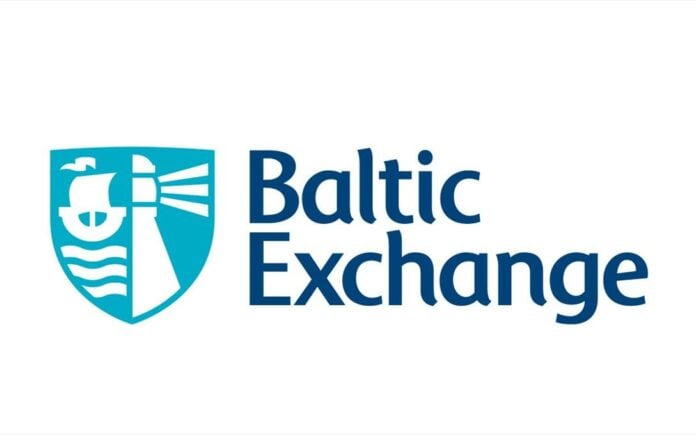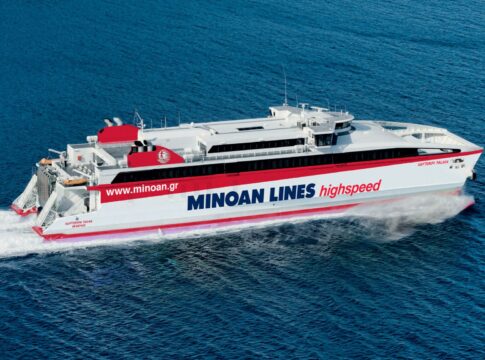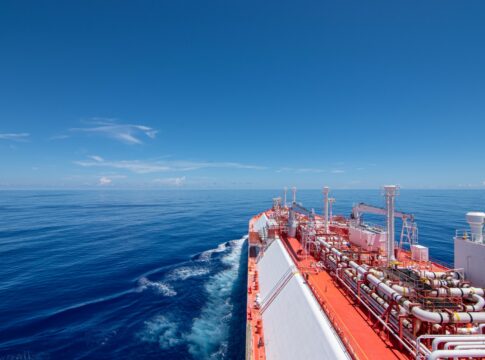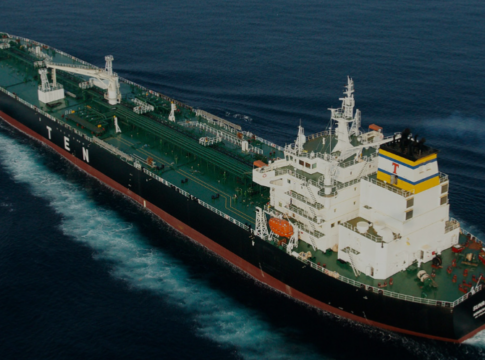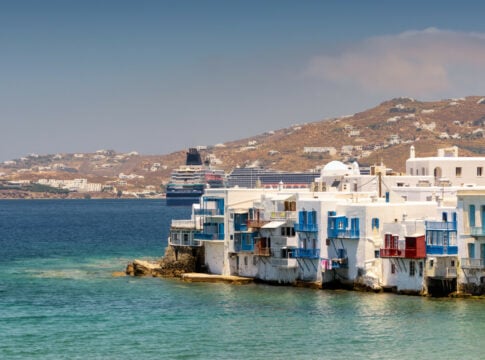All graphs reflect data for 18 February 2019 – 22 February 2019
Capesize
Gloom continued to beset the market for the big ships, with Dalian port last week imposing a ban on Australian coal imports and capping coal imports from all sources by the end of 2019 at 12 million tonnes. It was also another week with Vale absent from the market from Brazil and Teluk Rubiah. West Australia/China shipments provided the significant focus, with rates hovering around $5.00 for 7 March onward cargoes. It takes nerves to ballast in this market, with rates on the Tubarao/Qingdao run in the upper $12.00 range. Saldandha/Qingdao is now paying around $9.00, having briefly reached $9.50. Timecharter trading was all but absent from the market, although early in the week a 181,000-tonner fixed from Zhoushan for an Australian round at $6,800. As the week closed out, a 179,000-tonne vessel went retroactive Fangcheng 25 January for a Brazil or West Africa round at $7,000. Voyage rates from South Africa and Brazil to the Continent as a backhaul equivalent showed substantial negative returns on timecharter. Fronthaul rates for ships willing to breach International Navigating Limits (INL) remained at reasonable levels, equating to the high teens for non-breaching tonnage. Period rates continued to slide with a 177,000dwt 2009 vessel agreed at $10,500 for 14 to 17 months trading.
Panamax
There was some hope for Atlantic traders this week, with a reasonable amount of fixing absorbing some of the early ships, however, rates still remained very low with owners largely conceding to Arrival Pilot Station (APS) delivery and some without bonuses. A 2018-built Kamsarmax open Brake, 23-25 February, agreed $10,000 or $9,500 plus a $140,000 bonus for a run from the US Gulf to the Continent. The pace quickened from South America, with rates for the runs to the East on standard Kamsarmaxes in the low $12,000s and low $200,000, rising to $13,000 and $300,000 for the eco builds. There was a significant volume of fixing in the East, with increased North Pacific (NoPac) trade boosting rates, with charterers largely operating spot and Southeast Asia active, but with more spot ships. Although rates improved, the pace slowed and rates closed largely flat. Rates for NoPac rounds ranged from the mid $6,000s for Pamamaxes, rising to the low $9,000s for super eco Kamsarmaxes.
Supramax
Brokers saw a wide spread for vessels trading in the Atlantic versus committing to fronthaul business depending on the premium for going to the East. An increase in ships in the US Gulf led to easier numbers. A 46,000dwt vessel open Dneprobugskiy, was rumoured fixed for a trip to the East at $12,000. While a tight supply of February Ultramaxes resulted in a 2014 63,400-tonner booked from EL Dekheila for a grain trip, via the Black Sea, to the Far East at $17,000. In the East, a 52,000-tonner Brokers saw a wide spread for vessels trading in the Atlantic versus committing to fronthaul business depending on the premium for going to the East. An increase in ships in the US Gulf led to easier numbers. A 46,000dwt vessel open Dneprobugskiy, was rumoured fixed for a trip to the East at $12,000. While a tight supply of February Ultramaxes resulted in a 2014 63,400-tonner booked from EL Dekheila for a grain trip, via the Black Sea, to the Far East at $17,000. In the East, a 52,000-tonner 2004-built open Singapore was fixed for a trip via Australia to Singapore-Japan at $10,600. For North Pacific runs, a 57,900dwt 2015-built ship, open Laizhou, was reportedly fixed at $9,250. A 2013 66,000-tonner, open Mizushima 22 February, was booked at $10,250, both with redelivery in the Singapore-Japan range.
Handysize
The Baltic Handysize Index (BHSI) climbed 38 points over the week and returned to the same level seen two years ago, as rates slowly improved. Centurion booked a 38,000dwt 2017 vessel, open Londonderry, for a trip via the Baltic to move scrap cargoes to the East Mediterranean at $6,500. A 32,000-tonner was fixed at a rate in the mid $6,000s to redeliver in the West Mediterranean, while a 34,000 tonne 2012-built ship reportedly fixed at $7,250 for a similar run, possibly into Algeria. A 34,000dwt vessel delivery Kanmon Strait was fixed for a trip from CIS to China at low $4,000s.
Tanker market report
VLCC
The firm sentiment held in the Middle East Gulf with 270,000mt fixed to China at Worldscale (WS) 57.5 up eight points, with Singapore discharge peaking at WS 60. Going West, rates for 280,000mt to the US Gulf were assessed almost 5.75 points higher at WS 29 Cape/Cape. In West Africa, Day Harvest agreed WS 57.5 for 260,000mt to China, up eight points from the start of the week. A South Korean charterer fixed East Coast Mexico and US Gulf to South Korea at $6.95 million. Hound Point to South Korea went at $ 5.1 million, while Shell fixed fuel from Rotterdam to Singapore at $4.45 million.
Suezmax
West Africa rates for 130,000mt eased from WS 70 to WS 67.5/68.5. Black Sea/Mediterranean rates for 135,000mt were steady at close at WS 85.
Aframax
Another disappointing week in the Mediterranean saw rates for 80,000mt from Ceyhan hovering in the mid WS 80s, before nudging up modestly. Black Sea was fixed five points lower at WS 102.5, having dipped to WS 95. In the Baltic, available ice tonnage tightened and after replacement business was fixed at WS 102.5, the market went to WS 105. Rates for 80,000mt cross-UK Continent also firmed, now hovering between WS 110/115 in contrast to WS 100 a week ago. The 70,000mt Caribs up coast market eased 10 points to mid WS 140s.
Clean
Rates for 75,000mt Middle East Gulf/Japan dropped 17.5 points to WS 110 with the 55,000mt market losing 2.5 points to WS 110. The market for 37,000mt Continent/USAC was steady at WS 135, while the 38,000mt from US Gulf to UK Continent trade held at WS 120.
Freightos Baltic container report
Summary from VP, FBX, Philip Blumenthal
Following Chinese New Year, transpacific ocean prices are back to where they were at the beginning of the year. At $2,009, China-West Coast prices are just $6 higher than on January 6. At $3,110, China-East Coast prices are $27 lower.
Demand seasonally drops after Chinese New Year and freight prices take a tumble. China-West Coast prices dropped 25%, East Coast 22%, in the three weeks following last year’s holiday. In 2017, those same dips were 17% and 12%, respectively.
Analysis
With China still returning to work after the Spring Festival holiday, China-West Coast prices did not move a cent last week. Carriers cancelled their mid-month General Rate Increases (GRIs), and new prices coming in this week are at lower rates. However, carriers are still a lot better off (42% better off) than this time last year when China-West Coast stood at $1,442.
Blank sailings this month, including 2M’s last-minute addition of another ship on the AE10/Swan loop, may help cushion the fall a little bit. Another cushion, that will likely have more impact mid-year, is the probable increase in ship demolitions, spurred by IMO’s new sulphur emissions regulations.
Carriers have devised different surcharge structures to help recoup costs incurred by those new regulations. That will complicate current Beneficial Cargo Owner (BCO) annual contract negotiations on the transpacific lane.


